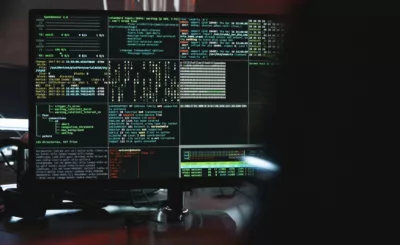Agile projects typically use a unit of work known as a ticket, user story, or increasingly a job story. These tickets are written to specify some new feature that provides value to a user of the system. They do not dictate how the feature should be built, nor do they specify who should build it. As such, they often assume that the person who is building the feature is capable of doing anything across the code base—it assumes they are "full-stack."
On a team where some developers identify as “backend,” some as “frontend,” and some as “full-stack,” how can we write tickets that are suitable for everyone? Can we also ensure that tickets are built efficiently?
Let's set the scene. Our ticket in question reads like this:
- As a customer
- When I complete a section of the form and click "Next," my progress is saved.
- So that I can finish it later and don't have to complete it in one sitting.
For the sake of this article, assume that we are confident we want to persist this data to our backend database, not to a browser session.
Our development team is made up of two people, Bertrum Backend and Flavia Frontend.
Our focus is assuring Bertrum and Flavia can complete this story, while also ensuring we can deliver on a few extra considerations:
- The story shows what business outcomes and value will be realised after the story is finished.
- Re-work is minimised as much as possible.
- Accountability for getting the story over the line is clear.
- Progress on the story during an iteration is transparent.
Possible solutions:
- Split the feature into two user stories—one frontend, one backend—that can be progressed independently.
- Create subtasks for the larger story that can be progressed independently.
- Ask the backend and frontend developers to work together directly on the story.
Split the Story
When splitting a story, it's easy to end up in a situation where we lengthen the total duration of the story—as each side works independently it can take a long time until we get feedback. We want to prevent long-lived unused code. It's easy to end up in this situation if for whatever reason one half of the split feature is blocked. We must be careful that any code being written will be used very soon by the other person. The distance between delivery of the backend/frontend stories should be as close as possible to avoid code rot.
Communication is key, without it separate stories can also lead to the implementation of "what if's," where design discussions can occur for what "might" be needed by Flavia or Bertrum. The same goes for defensive programming, where protection is put in place for situations that can never occur when the front and back are connected. Our aim should be to build "just enough" to satisfy both sides, thereby delivering the business outcome in the shortest time.
It is worth pointing out that in some cases it is valid that backend and frontend stories are split. For example, in the case where a backend API serves a dual purpose for a frontend application and programmatic access via the API. In this case, the API is in itself its own product, and thus the work could and probably should be handled with independent outcomes. This, of course, brings in explicit dependencies on the order in which the build can happen, which is something we want to avoid where possible due to the slower feedback loop.
Create Sub-tasks
This solution is not dissimilar to splitting the stories completely into backend and frontend. However, the one thing that it maintains is the business outcomes and value being captured once. It can help to drive away from speculative features that are unneeded.
Sub-tasks are often useful even without the explicit benefit of managing back and frontend work. Sometimes stories can be so big they extend over a single sprint. This situation can still mean progress can be made on sub-tasks, and importantly that progress is transparent.
One downside to this approach is that it can hide the amount of work that either side needs to do. Since the work board will likely only show a single estimation for this split work, it can make accurate capacity planning difficult.
Work Together
There are at least a couple of ways Flavia and Bertrum could work together, with a few different outcomes depending on the focus.
We could consider the distinction here between teams where people are interested and willing to cross-train, and those that are not. In each case a slightly different approach is needed, but with a broadly similar process.
We could ask them to work together on designing a contract between the two pieces of work. In this case, we'd want to pay close attention to any required changes that we discover and communicate them early. Upfront design of this contract can only get us so far. The logistical issue here is that one side of the work could be significantly smaller than the other, which then leads to one person starting work on a new feature before this is delivered. Problems can then occur where discoveries are made on the old story that requires the "finished" developer to start costly context switching.
Alternatively, it could be that the back and frontend developers pair together with the explicit intent of cross-training and building toward a "full-stack" team. This is particularly effective in cases where the business desires a fully cross-functional team and are in support of this model. Otherwise, it can produce unwanted reduction in team velocity.
Final Considerations
We've considered three approaches here, each of which have trade-offs. We have not discussed the effect any of these decisions would have on the day-to-day job satisfaction of Bertrum or Flavia. We need to consider that if our development process doesn't model our team or is resisted by the team, they might subconsciously try to circumnavigate it.
Unless your project has very explicit back-end and front-end separation, our favoured approach is for developers to work together and upskill each other. In our experience, the team of full-stack individuals has time and time again shown to be the fastest way to build quality software.





